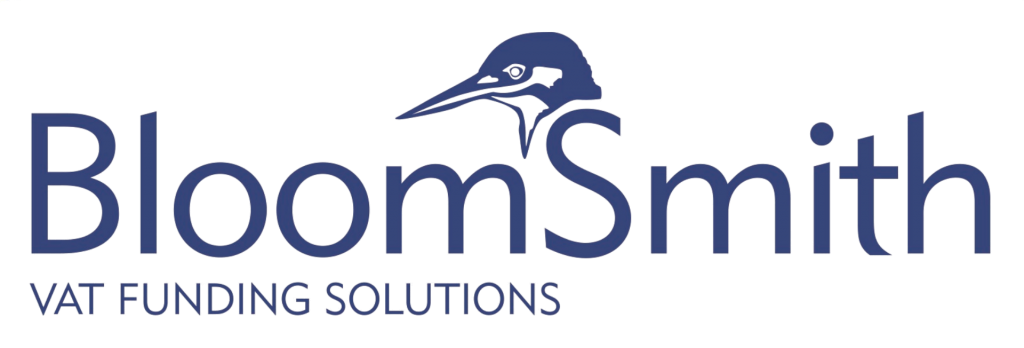Nigel Smith explains the (almost) inevitable SDLT payment needed on your commercial real estate purchase and why VAT makes a difference to the amount of SDLT you need to pay.
“BloomSmith with their HMRC funding solutions in respect of VAT and SDLT payments can have a really positive impact on the equity available for your projects”
If you’d like to find out more about BloomSmith’s SDLT and VAT funding loans, just get in touch.
Why are VAT and SDLT even a topic of conversation?
All areas of the UK property market are short of sources of debt funding. This is following structural changes in the UK commercial property lending market that have arisen since the financial crisis in 2007/8 and of course the subsequently with the economic shock that will result from the Covid 19 lockdown.
On top of this, second legal charges are going to be poorly received by first charge lenders and anyway, cash should be preserved as much as possible. VAT and SDLT need cash.
BloomSmith is able to fund VAT requirements without requiring a second charge on your property.
I understand VAT but what is Stamp Duty Land Tax (SDLT)?
Stamp Duty Land Tax (SDLT) is a payment required by HMRC on property or land over a certain price in England and Northern Ireland. Scotland and Wales have slightly different rules.
For non-residential land and properties (which is what we’re talking about here) the current SDLT threshold is £150,000. For residential properties it’s £125,000.
You pay the tax when you:
- buy a freehold property
- buy a new or existing leasehold
- buy a property through a shared ownership scheme
- are transferred land or property in exchange for payment.
How much Stamp Duty Land Tax (SDLT) do I need to pay?
How much you pay depends on whether the land or property is:
HMRC has a Stamp Duty Land Tax (SDLT) calculator to work out how much tax you’ll pay.
What value do I pay SDLT on?
In general terms the total value you pay SDLT on (sometimes called the ‘consideration’) is usually the price you pay for the property or land, this will include other “costs” however.
What are the SDLT rates on commercial property?
As a simple example, on a total chargeable consideration of £1,000,000, on a non-residential transaction you would currently pay £39,500, or 3.95% of the consideration in SDLT.
There’s no SDLT on the first £150,000 of property value. You pay 2% on the next £100,000 (the portion from £150,001 to £250,000) and 5% on the remaining amount of £750,000 (the portion above £250,000).
£0 to £150,000 SDLT = £0
£150,001 to £250,000 SDLT = £2,000
£250,000 to £1,000,000 SDLT = £37,500
Total SDLT payable to HMRC = £39,500 or 3.95% of the chargeable consideration
This may not be the whole story though…..
Why, what’s included in the chargeable consideration?
The chargeable consideration includes any paid for assets that form part of the land or property.
The chargeable consideration also includes any VAT you pay on the transaction.
Can I clarify what you have just said please? SDLT is payable on the VAT due?
Yes. SDLT is payable on the whole amount due including the VAT payable.
This means that on top of the valuation price (which is the price you pay in the contract) you will need to have the equity to pay all transaction costs (which will also normally have VAT on them) and the VAT of 20%.
So, on the purchase of £1,000,000 referred to above how much SDLT would be payable on a VAT elected building?
As we set out above, on a simple total chargeable consideration of £1,000,000, on your commercial property transaction, you would currently pay £39,500, or 3.95% of the consideration in SDLT.
However, if VAT is payable on the transaction the SDLT payment will be different.
On a purchase price of £1,000,000 where 20% VAT is chargable. SDLT would be payable on £1,200,000 (£1,000,000 plus the £200,000 of VAT). This means SDLT of £49,500 or 4.125% is due.
Find out how BloomSmith can help with VAT funding loans.
At what stage is SDLT payable?
You must send an SDLT return to HMRC and pay the tax within 14 days of completion.
Find out more on the HMRC website.
Can my main debt/mortgage lender cover VAT and SDLT requirements on commercial property purchases?
While traditional mortgage lenders remain active as providers of senior secured lending, the levels of loan-to-value (LTV) they are willing and able to provide are now significantly lower than prior to the 2007/8 banking crisis and the levels prior to the Covid-19 lockdown.
We think that loan to value levels of 50% and below are likely from mainstream providers of debt, if they are prepared to lend against real estate at all, until the market has been seen to have stabilised and the banks capitalisation understood.
So, the answer to the question is, it depends on how much equity you have and what you would like to spend it on.
Read our recent blog about LTV, what it means and how you can secure funding to cover your VAT without needing a second charge on your property.
What’s the impact of our economic environment today along with bank regulation changes on VAT and SDLT lending?
These changes leave property investors, particularly in the ‘SME’ bracket, with much bigger capital funding requirements to fill the gap created by lower bank LTV ratios.
For parties who are already invested there may also be a need to re-establish LTV ratios as a result of revaluations and equity calls by the banks. This may have an impact on the capital available for new projects, reducing the actionable turnover capacity of a professional property investor with a finite amount of capital to invest.
For example, in the recent past, LTVs of 80% meant borrowers could fund £1,000,000 of property investment for every £200,000 of capital (excluding any VAT payments due); today, with LTV’s topping out at say 60% LTV, this doubles the ‘equity’ funding requirement, or put another way halves the investment capacity of a typical property investor.
On top of this other costs need to be met like SDLT as we have seen above. For our £1,000,000 example where VAT is chargeable at 20% (or £200,000), this means that the Loan to Cost (LTC) is actually 47% only, at least until the VAT element is repaid.
How can I close my VAT and SDLT funding gap?
BloomSmith provides funding facilities to meet the 20% VAT and associated SDLT obligations to professional property investors in UK commercial property. We do this passively, often without requiring a second charge on your property, alongside traditional debt lenders with ‘senior’ loans which are legally secured over the borrower’s property assets.
To find out more about BloomSmith’s SDLT and VAT bridging loans, just get get in touch with Nigel Smith


